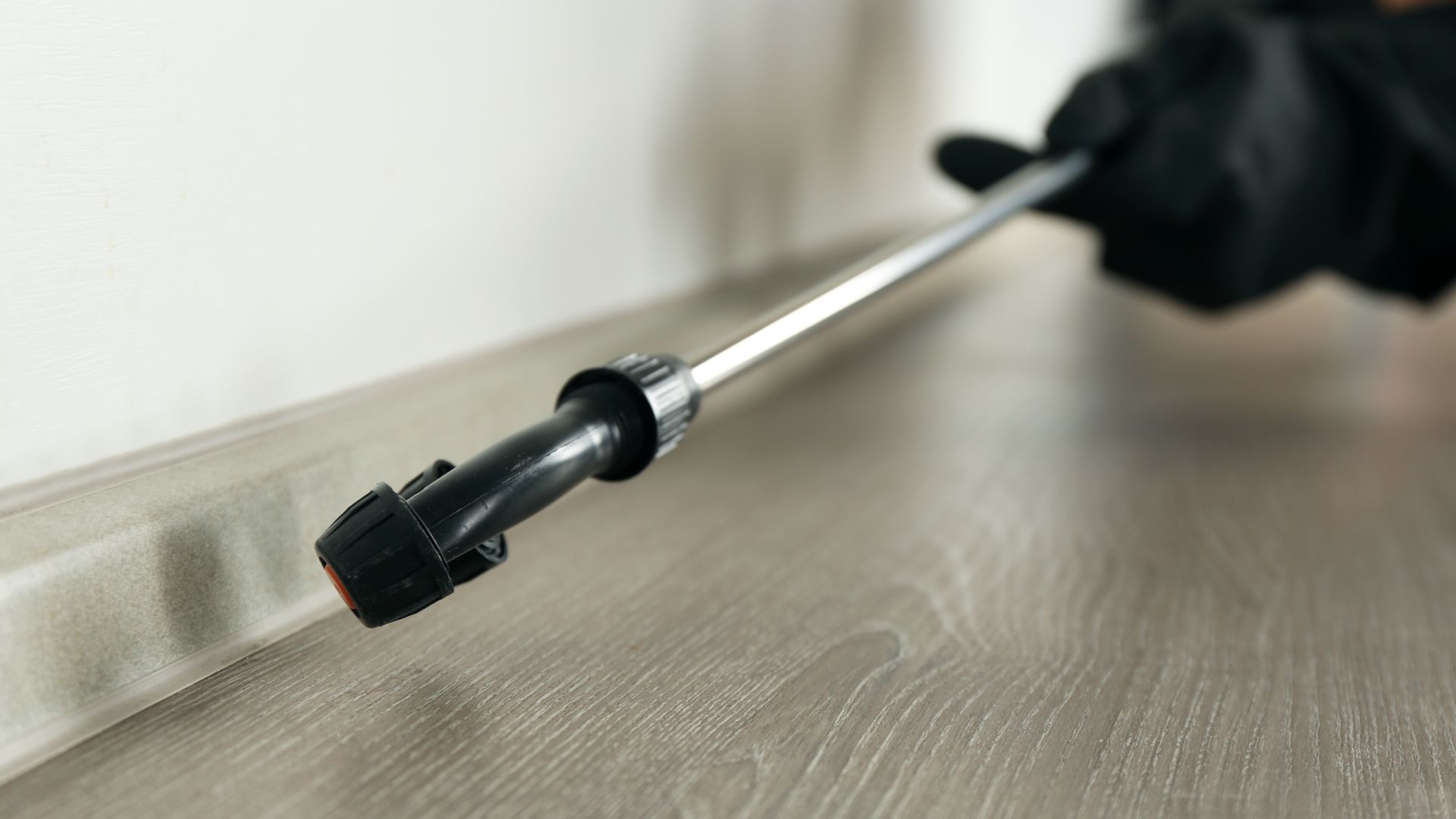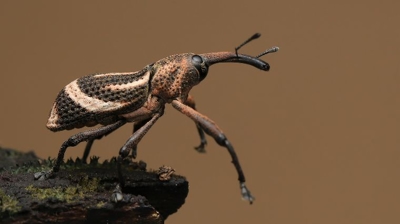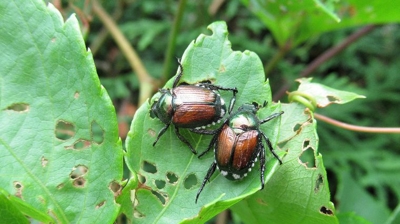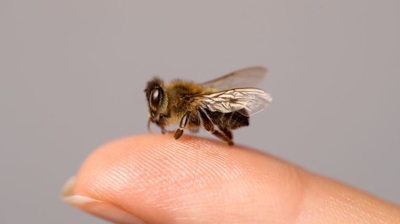
Fungus Gnats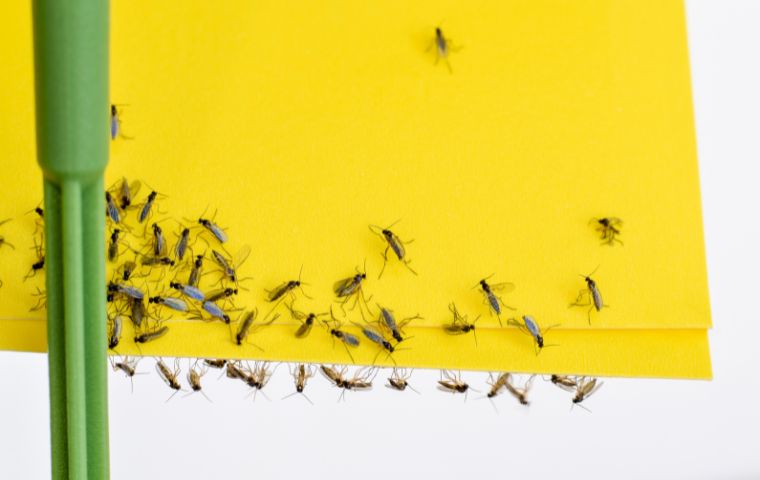
What Are Fungus Gnats?
Fungus gnats are small, flying insects that belong to the family Sciaridae and the order Diptera, which includes true flies. These tiny gnats are often found in and around moist, organic-rich environments, such as potted plants, compost piles, and decaying organic matter. Fungus gnats are notorious pests for gardeners and indoor plant enthusiasts because their larvae feed on fungi, decaying plant material, and the roots of various plants. Here is an overview of fungus gnats:
- Appearance: Adult fungus gnats are typically small, measuring around 1/16 to 1/8 inch (1.5 to 3 mm) in length. They are dark-colored, with long, slender bodies, and their wings are covered in a noticeable fringe of fine hairs.
- Life Cycle: Fungus gnats undergo a complete metamorphosis, consisting of four stages: egg, larva, pupa, and adult. Adult females lay their eggs in the moist soil or organic matter near plants. Larvae hatch from these eggs and feed on the roots of plants, fungi, and decaying organic matter. After pupating in the soil, adult gnats emerge and begin the cycle anew.
- Habitat: Fungus gnats are commonly found in indoor potted plants, especially those kept in overly moist or poorly-draining soil. They are also prevalent in outdoor gardens, particularly in areas with high humidity and abundant organic debris.
- Damage: Fungus gnat larvae can harm plants by feeding on their roots, causing stunted growth and reduced vigor. Additionally, they can spread plant pathogens like root rot, which further damages the plants.
- Control and Prevention: Managing fungus gnats involves maintaining proper soil moisture levels, allowing the top layer of soil to dry out between waterings, and avoiding overwatering. You can also use sticky traps to capture adult gnats and reduce their numbers. In severe infestations, using beneficial nematodes or insecticides specifically designed for fungus gnats may be necessary.
- Importance in Ecosystems: While fungus gnats can be pests in horticultural settings, they serve as decomposers in natural ecosystems, helping to break down organic matter and recycle nutrients.
Fungus gnats are small insects that can be a nuisance to gardeners and indoor plant enthusiasts due to their larvae's damage to plant roots. Understanding their life cycle and adopting appropriate control measures can help manage and prevent infestations, ensuring the health of your plants.
Are Fungus Gnats Harmful?
Fungus gnats (Sciaridae family) may seem like a minor nuisance, but they can pose several risks in both residential and commercial settings, particularly in greenhouses, nurseries, and indoor plant environments. Their potential harm can be categorized into several key areas:
Damage to Plants
- Larvae Feed on Roots: The primary threat comes from the larvae, which live in moist soil and feed on organic matter, including plant roots. This can weaken young plants, stunt growth, and make them more susceptible to disease.
- Disruption of Nutrient Uptake: As the larvae consume root hairs and tunnel through roots, they reduce a plant's ability to absorb water and nutrients, leading to wilting, yellowing, and poor overall health.
- Increased Risk of Root Rot: Their feeding activity creates wounds that allow soil-borne pathogens like Pythiumand Fusarium to enter, accelerating decay and plant death.
Disease Transmission
- Vector for Plant Pathogens: Fungus gnat larvae can carry and spread fungal diseases such as Botrytis cinerea(gray mold) and Pythium (a cause of damping-off disease in seedlings).
- Spread of Bacteria and Mold: Adult fungus gnats can transfer spores and bacteria from infected plants to healthy ones as they move between plants and soil.
Annoyance and Hygiene Issues
- Indoor Nuisance: Adult fungus gnats are small, flying insects that can become a persistent annoyance in homes, offices, and greenhouses. Their erratic flying patterns and attraction to light make them particularly bothersome.
- Contamination of Food and Surfaces: While not directly harmful to humans, their presence in kitchens and food storage areas can be unsanitary, especially in food production facilities or restaurants.
Impact on Agriculture and Commercial Growing Operations
- Crop Loss and Economic Damage: Large infestations in greenhouses, nurseries, and hydroponic systems can lead to significant crop losses, forcing growers to spend on pest control treatments and replacements.
- Increased Costs for Pest Management: Professional growers often need to invest in biological controls, chemical treatments, and environmental adjustments to keep fungus gnats under control, adding to operational costs.
Potential Allergic Reactions
- Irritation from Swarms: While they do not bite, high populations in enclosed spaces can cause irritation and discomfort, particularly for individuals with sensitivities to insect activity.
Fungus Gnat Appearance
Fungus gnats are small insects with distinctive physical characteristics. Here is a detailed description of what fungus gnats look like:
- Size: Fungus gnats are tiny insects, typically measuring between 1/16 to 1/8 inch (1.5 to 3 mm) in length.
- Body: They have slender, delicate bodies that are usually dark gray to black in color. The body is segmented and comprised of three main parts: the head, thorax, and abdomen.
- Head: Fungus gnats have a relatively large, bulbous head compared to their body size. Their head features a pair of prominent, compound eyes and short antennae.
- Wings: One of the distinguishing features of fungus gnats is their wings. These insects have a pair of transparent wings with a distinctive fringe of fine hairs along the edges. These hairy wings give them a distinctive appearance and help in their identification.
- Legs: Fungus gnats have long, slender legs, which are often noticeably longer than their bodies. Their legs are used for walking and sometimes for hovering in the air.
- Behavior: Adult fungus gnats are often seen flying in a characteristic erratic manner, especially around potted plants and areas with organic matter. They are attracted to light sources and are most active during the evening and nighttime.
- Larvae: While this description primarily focuses on adult fungus gnats, it's worth noting that the larvae of fungus gnats are small, legless, worm-like creatures with translucent bodies and a darker head capsule. They are typically found in the soil or growing media of plants.
Fungus gnats are small, dark-colored flies with a unique wing structure featuring a fringe of fine hairs. These tiny insects are often seen flying around indoor plants and moist, organic-rich environments. Understanding their appearance is essential for accurate identification and implementing control measures if they become a pest in your garden or indoor spaces.
Fungus Gnat Habitat
Fungus gnats are commonly found in various environments, especially those that are moist, organic-rich, and provide suitable conditions for their development. Here are some common places where you might encounter fungus gnats:
- Indoor Potted Plants: Fungus gnats are a frequent nuisance for indoor plant enthusiasts. They lay their eggs in the moist soil of potted plants, and their larvae feed on plant roots and decaying organic matter within the soil.
- Greenhouses: Greenhouse environments, with their high humidity and abundant plant material, can be ideal breeding grounds for fungus gnats. They often infest both ornamental and edible crops in greenhouses.
- Compost Piles: Fungus gnats are attracted to decomposing organic matter. Compost piles provide a rich source of food for both adult gnats and their larvae.
- Outdoor Gardens: In outdoor gardens, fungus gnats can be found in areas with moist, organic-rich soil, especially if the garden is kept consistently damp. They may also infest the root systems of garden plants.
- Mushroom Growing Facilities: Some species of fungus gnats are associated with mushroom cultivation, as they feed on the mycelium and decaying mushroom material.
- Moist Basements and Crawl Spaces: In homes with moisture issues, such as leaky pipes or damp basements, fungus gnats can find suitable conditions for breeding and living.
- Indoor Houseplants and Atriums: Besides potted plants, fungus gnats may infest indoor atriums and spaces with abundant foliage and humidity.
- Nurseries and Plant Stores: Commercial nurseries and plant stores may sometimes have fungus gnat infestations, which can spread to the plants they sell.
- Waste Disposal Areas: In outdoor settings, fungus gnats can be found around waste disposal areas, such as compost bins and trash receptacles.
- Natural Habitats: Some species of fungus gnats inhabit natural ecosystems, where they play a role in breaking down decaying plant material and fungi.
Understanding where you are likely to find fungus gnats can help you take preventive measures to reduce their presence or control an infestation if it occurs. Proper watering practices, good sanitation, and using sticky traps are among the methods used to manage fungus gnats in these environments.
Fungus Gnat Diet
Fungus gnats have varied feeding habits at different stages of their life cycle. Here's a detailed explanation of what fungus gnats eat at each stage:
Larvae (Larval Stage):
Fungus gnat larvae are primarily detritivores and feed on decaying organic matter in the soil or growing medium. This includes dead plant material, leaf litter, and decomposing organic debris. They are also known to feed on fungi and algae that grow in the moist environment of potted plants or other suitable habitats. Fungus gnat larvae can be particularly damaging to plants as they may feed on the delicate root hairs and young root tissue, leading to stunted growth and reduced plant vigor. This root damage is a primary concern for gardeners and plant enthusiasts.
Adults (Adult Stage):
Adult fungus gnats have a different diet compared to their larval stage. They are primarily nectar feeders, and they often seek out sources of sugary liquids, such as flower nectar and other plant exudates. While they are not plant pests in the same way that their larvae can be, adult fungus gnats can be a nuisance in indoor spaces, where they may be attracted to sweet substances like overripe fruit or spilled sugary drinks. Some species of adult fungus gnats also consume other microorganisms, such as pollen and fungi, as supplementary food sources.
Fungus gnats do not bite humans or animals, and they do not feed on blood. Their larvae feed on decaying organic matter and plant material in the soil, while adult gnats primarily seek out sources of nectar and other sugary fluids to sustain themselves. While they can be a nuisance to gardeners and indoor plant owners due to their larval damage and presence, they are not harmful to humans or pets in terms of feeding behavior.
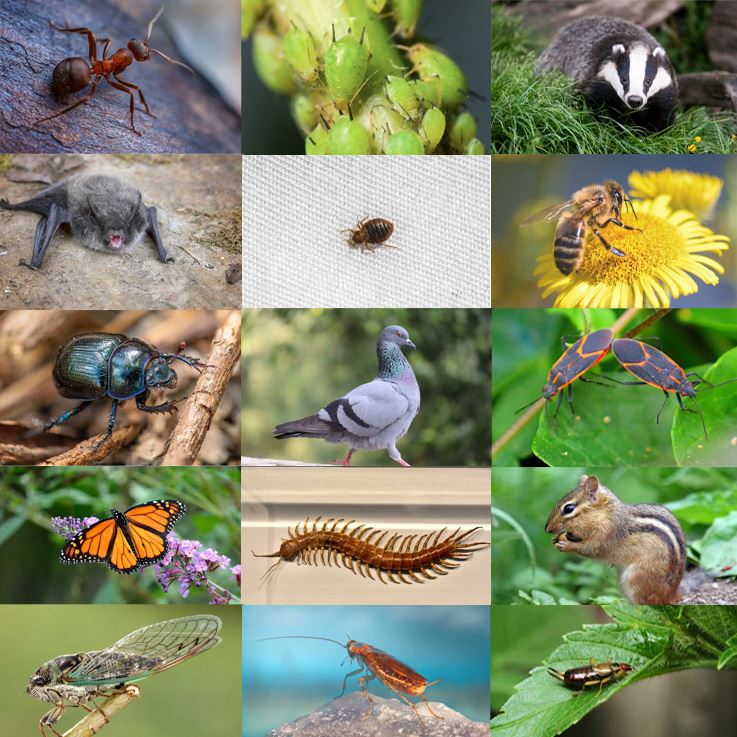
Fungus Gnat Life Cycle
The life cycle of fungus gnats (family Sciaridae) is characterized by four distinct stages: egg, larva, pupa, and adult. Understanding their life cycle is crucial for effective management and control. Here is a detailed overview of the life cycle of fungus gnats:
Egg Stage:
Fungus gnat females lay their eggs in moist soil, organic-rich matter, or growing media, such as the soil of potted plants or in decomposing organic material. Eggs are tiny, translucent, and difficult to see with the naked eye. The number of eggs laid can vary depending on environmental conditions, but a single female can lay hundreds of eggs during her lifetime.
Larva Stage:
After about 4-6 days, the eggs hatch into larvae. Fungus gnat larvae are small, legless, worm-like creatures with elongated, translucent bodies. They have a darker head capsule, which is often the most visible part of their body. Larvae feed on a diet of decaying plant material, fungi, algae, and the roots of plants. The larval stage can last for several weeks to a few months, depending on temperature and food availability.
Pupa Stage:
When the larvae are ready to pupate, they construct small, silk-like cocoons in the soil or growing medium. Inside the cocoon, the larvae undergo metamorphosis, transforming into pupae. The pupal stage is a non-feeding, resting stage during which the gnat undergoes significant changes in its body structure. Pupation typically lasts for about 4-7 days, but it can vary depending on environmental conditions.
Adult Stage:
After completing pupation, the adult fungus gnats emerge from their cocoons. Adult fungus gnats are small flies with long legs and distinctive fringed wings. They are sexually mature and capable of reproducing shortly after emerging. The adult stage of fungus gnats typically lasts for several weeks to a few months, during which they feed on nectar and can lay eggs to start the cycle anew. Adult fungus gnats are most active during the evening and nighttime.
The life cycle of fungus gnats can vary in duration depending on factors like temperature, humidity, and the availability of food. In optimal conditions, the entire life cycle from egg to adult can be completed in as little as 3-4 weeks. Effective control and management strategies often target the larval stage in the soil or growing medium, as this is when the gnats can cause the most damage to plant roots and when they are most vulnerable to control measures.

Hear From Our Happy Customers
-
"Wonderful Service"
Wonderful service. Jarvis is great. Took care of everything I needed. Thank you!
- Henry P. -
"Exceeds Expectations"
I can’t say enough positive things about this company... The tech that came out, Jarvis went above and beyond my expectations. Thank you guys, I will continue using your services.
- Jake M. -
"Fantastic & Patient"
Jarvis was fantastic and patient. He answered my questions with an in-depth explanation and addressed all of my areas of concern. Would love for him to be my assigned tech going forward. Well done!
- Yonnette M. -
"Great Communication"
Tech was on time, communication was great, and he accommodated my needs.
- Alonzo W. -
"Professional & Considerate"
I’m pleased with Miche services. Jarvis came today. Professional and considerate. Thank you!
- Judy B. -
"Very Knowledgeable"
The tech that arrived was courteous, professional, and very knowledgeable. He was Great.
- Uerial I.
